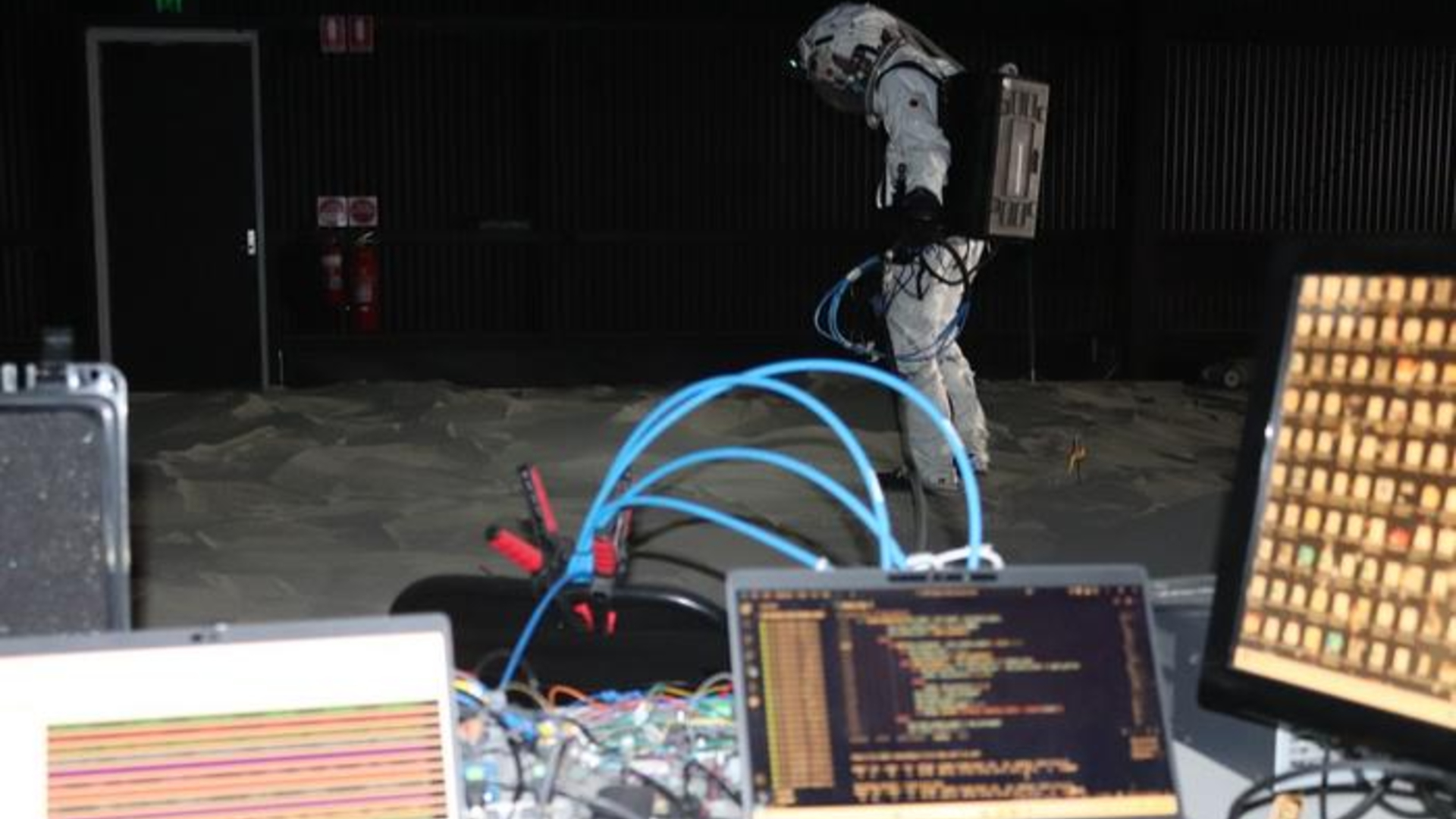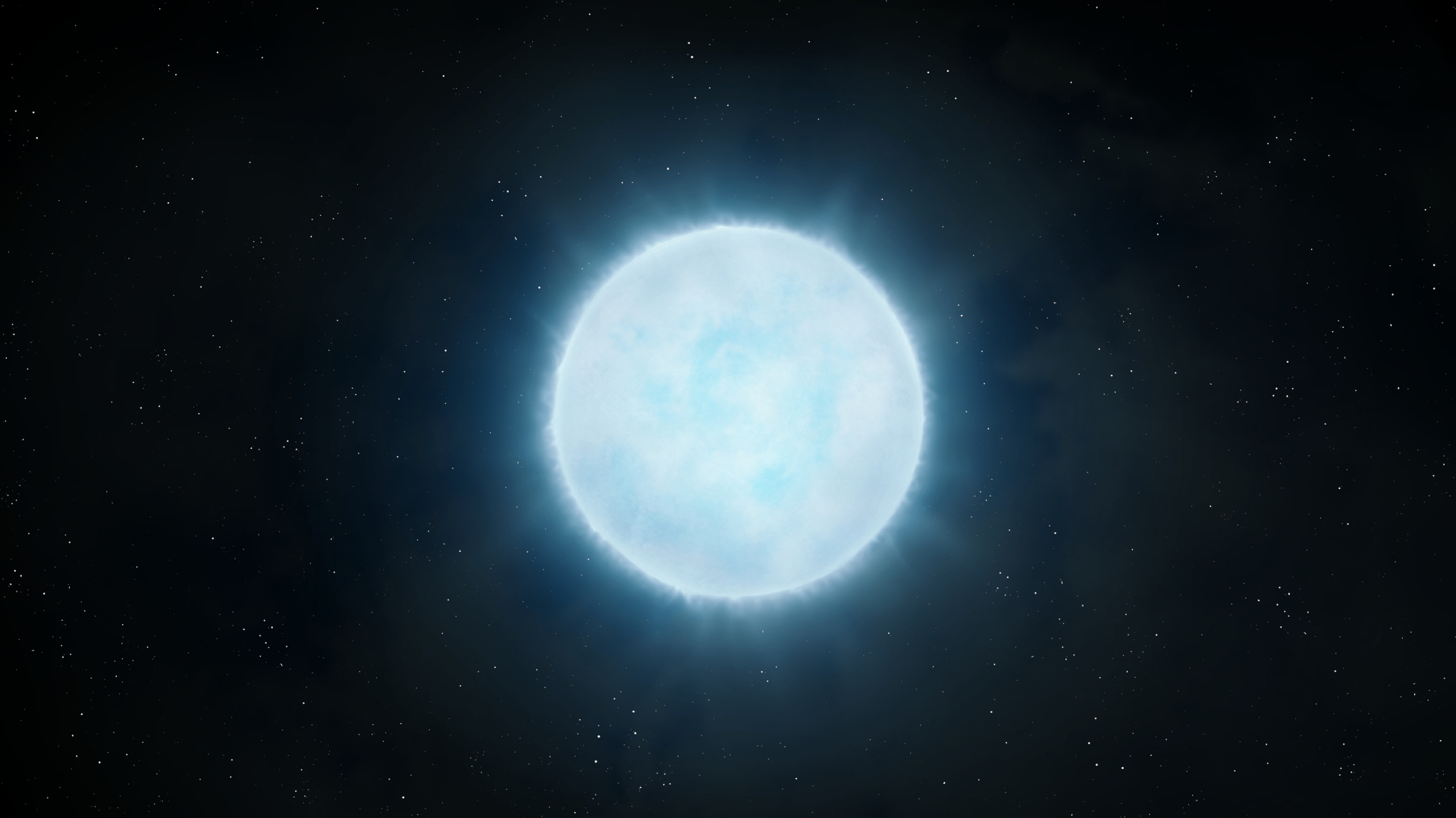New 'exosuit' with artificial muscles could help astronauts explore the moon and Mars
"The hope is that this technology could pave the way for future wearable robotic systems that enhance astronaut performance and reduce fatigue during extravehicular surface activities."

Generations of astronauts have spoken about how hard it is to move your limbs inside a spacesuit, where pressurization protects your body — but creates resistance.
A new "exosuit," tested during a two-week space analog mission last month in Australia run by the Austrian Space Forum, hopes to change that. The garment, which is meant to be worn under a spacesuit, features artificial muscles to make it easier to move around while walking, either on the moon or Mars.
"The hope is that this technology could pave the way for future wearable robotic systems that enhance astronaut performance and reduce fatigue during extravehicular surface activities," Emanuele Pulvirenti, a research associate at the University of Bristol in the United Kingdom who sewed the suit himself, said in a statement released Tuesday (Nov. 4).
Exosuit research is hardly new. For example, NASA led the creation of an "Iron Man"-type suit called the X1 Robotic Exoskeleton a little more than a decade ago, while Sarcos developed the prototype XOS exoskeleton for the Defense Advanced Research Projects Agency (intended for testing with the U.S. Army) around 2007. New tech developments strive to make each exosuit generation stronger and lighter, but Pulvirenti also got inspiration from the past.
Pulvirenti spoke with his grandmother, who is a tailor, as well as Vivo Hub colleagues at Bristol while developing the garment. The artificial muscles contained within reside in two layers: a nylon layer on the outside and a thermoplastic layer on the inside to make it airtight. Kevlar is used on the knee straps and waistband for tension resistance and strength.
Pulvirenti then flew to Australia last month, garment in hand, to work at what researchers call the largest lunar environment analog in the Southern Hemisphere. The University of Adelaide and ICEE.Space co-hosted four analog astronauts from Oct. 9 to Oct. 22 at a facility nicknamed CRATER, short for "Covered Regolith Analogue Terrain for Experimental Research."
CRATER is "a research testing environment that simulates conditions on the moon, including the unique lighting experienced during the course of a lunar day," John Culton, director of the University of Adelaide's Andy Thomas Centre for Space Resources, said in a statement about the analog mission. The mission saw the "astronauts" test spacesuits, habitats and research protocols.
Breaking space news, the latest updates on rocket launches, skywatching events and more!
Unlike many analog astronauts, who work with a small team on site, this group had global connections. A mission control in Austria served as a mission control not only for CRATER, but also for around 200 scientists in 25 countries who participated in the "World's Biggest Analog" — the largest simulation of its kind.
Mission managers are looking to add a new layer of professionalism to analog missions, which have been ongoing for decades, by introducing extra training, a requirement for publication and research on a more massive scale than ever before, the event website states.
In Australia, the analog astronauts focused on testing Pulvirenti's team's suit for comfort, mobility and biomechanical properties while walking, climbing and carrying items. While the tech is very early-stage, Pulvirenti added that he would love to see it tested on the International Space Station before the complex is expected to retire in late 2030.
In the meantime, he's targeting everyday use of the tech for folks with disabilities: "Our next goal is to create a hybrid suit that can switch between assistance and resistance modes as needed, which could be of great benefit for people in need of support with mobility, going through physical rehabilitation."

Elizabeth Howell (she/her), Ph.D., was a staff writer in the spaceflight channel between 2022 and 2024 specializing in Canadian space news. She was contributing writer for Space.com for 10 years from 2012 to 2024. Elizabeth's reporting includes multiple exclusives with the White House, leading world coverage about a lost-and-found space tomato on the International Space Station, witnessing five human spaceflight launches on two continents, flying parabolic, working inside a spacesuit, and participating in a simulated Mars mission. Her latest book, "Why Am I Taller?" (ECW Press, 2022) is co-written with astronaut Dave Williams.
You must confirm your public display name before commenting
Please logout and then login again, you will then be prompted to enter your display name.

